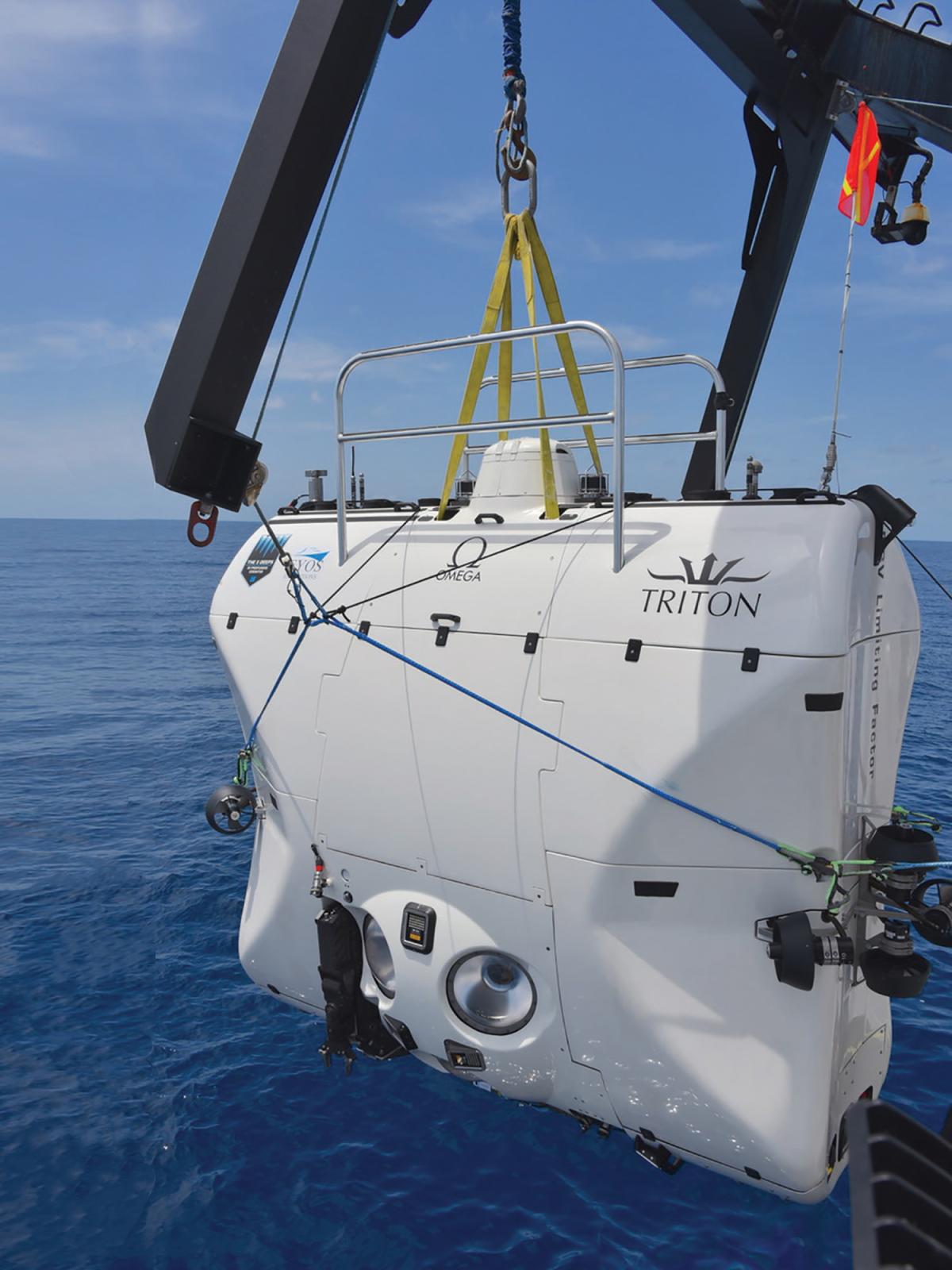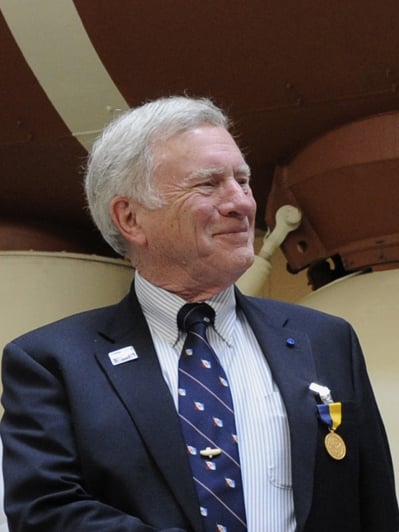On 28 April 2019, Victor Vescovo, a venture capitalist from Texas, solo-piloted his two-man submersible Limiting Factor to Challenger Deep, the oceans’ deepest place. He set a new depth record of 35,853 feet, exceeding the old record by 40 feet. Two days later, he repeated this solo dive.
Only three manned submersibles have been to this place. In 1960, Engineer Jaques Piccard and I (then a Navy Lieutenant) piloted the Navy’s Bathyscaphe Trieste to 35,813 feet. In March 2012, filmmaker James Cameron dove his one-person Deepsea Challenger to a depth of 35,787 feet.
An adventurer, Vescovo has summited the highest peaks on each of the seven continents as well as trekked to both Poles. To dive to the deepest places in the five oceans, he commissioned Triton Submarines to build a two-person vehicle capable of diving to a depth of nearly seven miles. The Limiting Factor was designed, built, and tested over a three-year period.
Vescovo, however, had a vision beyond Challenger Deep. Named “The Five Deeps Expedition,” this program would dive into the deepest places (trenches) in the five oceans. To do this, he created a “go-anywhere” diving system of submersible, mothership, and three unmanned landers. Vescovo fully funded costs associated with the expedition.
The dedicated mothership, Pressure Drop, is the former U.S. Navy ship Indomitable (T-AGOS-7) and later, the National Oceanic and Atmospheric Administration’s McArthur II. The ship was reactivated and upgraded to meet mission requirements, including a hangar to house the submersible and a newly developed hull-mounted seafloor-mapping system (Kongsberg EM-124).
The unmanned landers are designed to operate with the submersible at the seafloor. They have lights and cameras that can be acoustically controlled from the submersible or the mothership. During the dive mission, baited traps were kept on board to help photograph “who’s coming to dinner” and to capture live specimens. There also were baskets to hold physical samples, such as rocks, collected by the submersible’s mechanical arm.
The landers are launched at the dive site before the submersible dives. It takes them four hours to reach the seafloor (at 35,800 feet), and once there, their positions are used to help navigate the submersible. Using acoustic beacons and transponders, the mothership can track the landers and the manned vehicle.
Once a dive mission was completed, the Limiting Factor would leave the bottom first for the four-hour trip back to the surface. Once well on its way, the landers would be acoustically commanded to drop their anchor weights and return to the surface for recovery.
The Five Deeps Expedition began in December 2018 with a 27,480-foot dive into the Puerto Rican Trench, the deepest place in the Atlantic Ocean. By April 2019, the expedition had completed dives at three of the five deepest trenches (Puerto Rican, South Sandwich, and Java) and was on site at Challenger Deep near Guam.
Over ten days, the Limiting Factor made four dives into Challenger Deep and one into Sirena Deep. Two were solo dives by Vescovo, and Patrick Lahey, president of Triton Submarines, piloted two with an observer on board. Bottom times at the seafloor ranged from 2.5 to 4 hours. Now, four of the five deeps have successfully been explored.
The media has widely reported the new depth record achieved by Vescovo and his sighting of plastic waste in the trench. The real historic value, however, is in the sequential exploration of the deepest place in each ocean using a reliable deep-diving system.
The Five Deeps Expedition also had a robust scientific component, with experts in hadal (trench) biology and geology on board. They collected sensor data, imagery, and physical samples. Preliminary indications are that four previously unknown shrimplike arthropods were collected. The rock specimen is under study at the University of Hawaii.
In addition to diving operations, the mothership undertook considerable hydrographic-quality seafloor imagery at each dive site, much of it for the first time.
While the hadal depths comprise only 2 percent of the global seafloor, knowledge of the marine life, geology, and tectonics there is essential to understand how the World Ocean works.
The expedition ends in September 2019. The intention is to sell this deep-diving system to an individual or institution that will continue the explorations.




